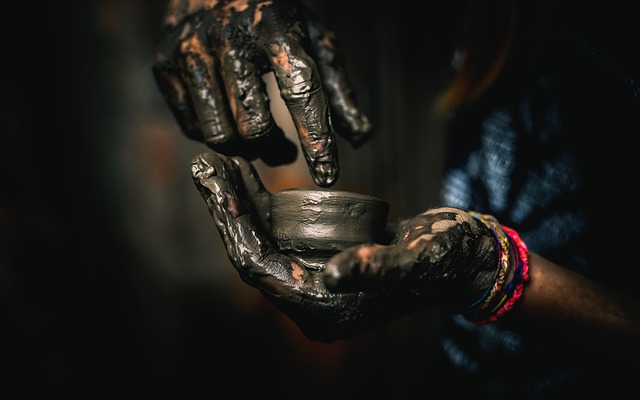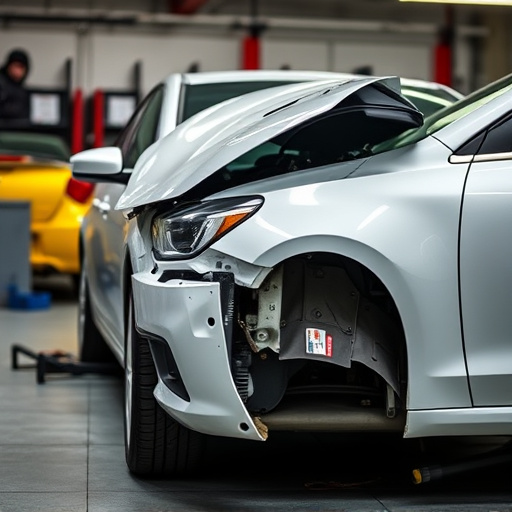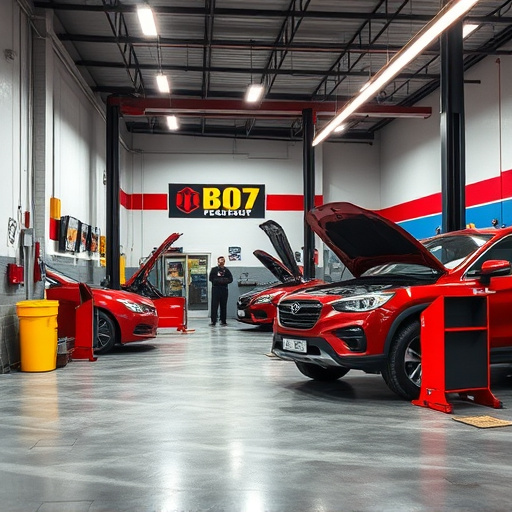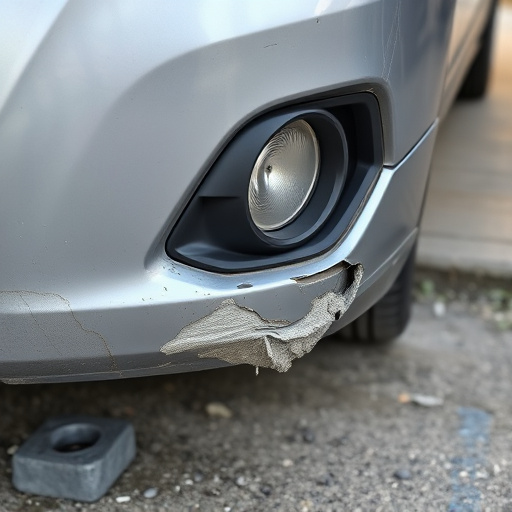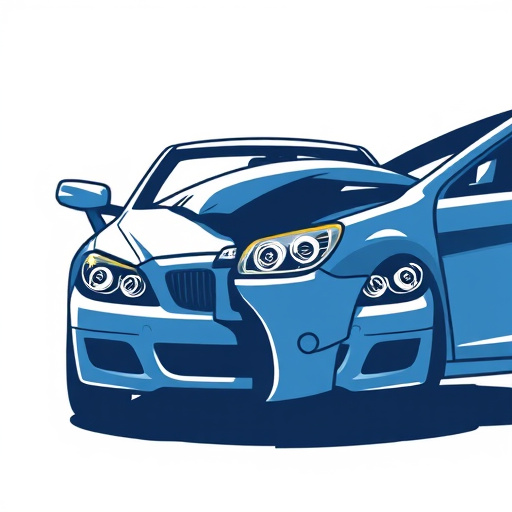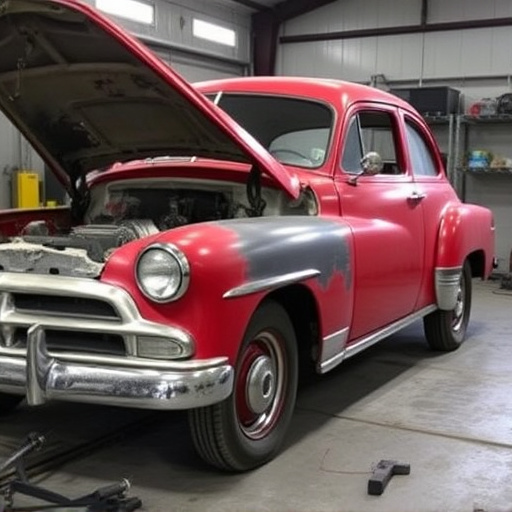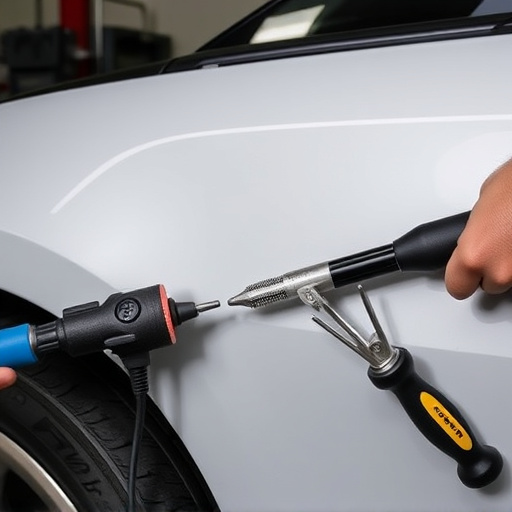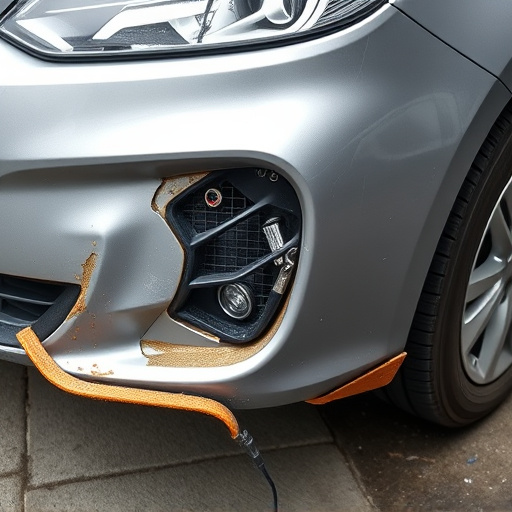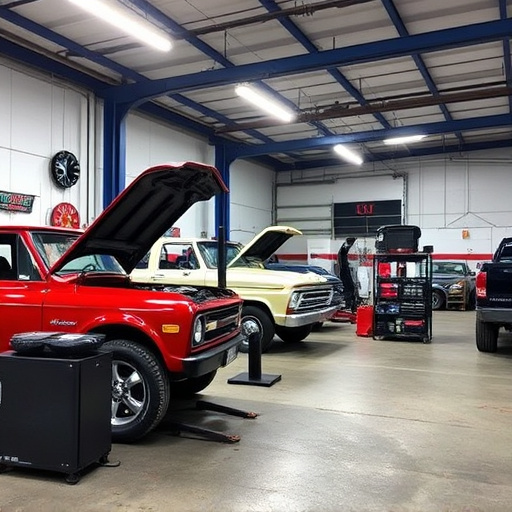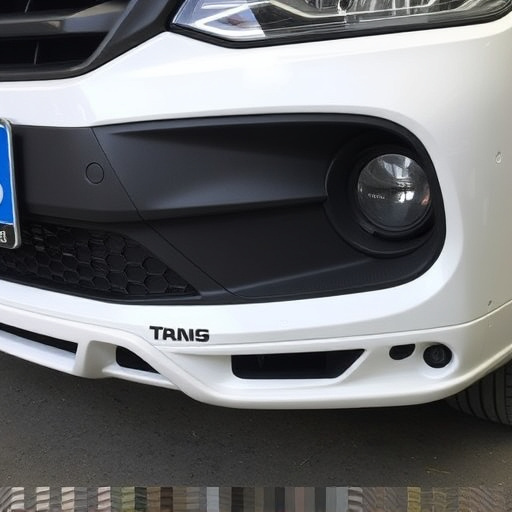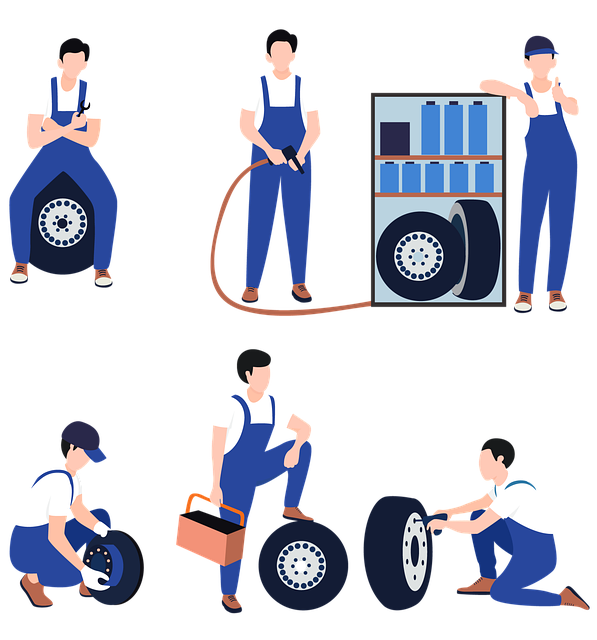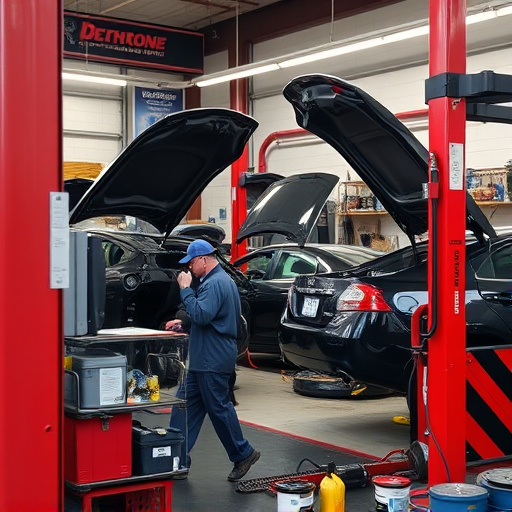Infrared curing equipment has transformed automotive body repair and restoration, speeding up drying and curing processes with focused radiation, offering advantages over traditional methods like precise temp control, faster cure times, improved productivity, and better finish quality. Portable options provide flexibility but require maintenance and initial cost consideration, while fixed systems offer swift, efficient repairs, consistent performance across materials and thicknesses, ideal for busy shops aiming to maximize throughput while maintaining quality. Thorough research is vital before investing in this technology.
In the realm of auto body repair, efficient drying and curing of paint are paramount for quality finishes. Two prominent options, portable and fixed infrared curing equipment, offer distinct advantages. This article delves into the intricacies of these systems, providing a comprehensive overview of their functionalities, benefits, and drawbacks. Understanding the nuances between portable and fixed infrared curing equipment is crucial for professionals aiming to optimize their workflows and deliver superior outcomes.
- Understanding Infrared Curing Equipment: A Brief Overview
- Advantages and Disadvantages of Portable Infrared Systems
- Fixed Infrared Curing: Benefits, Applications, and Considerations
Understanding Infrared Curing Equipment: A Brief Overview
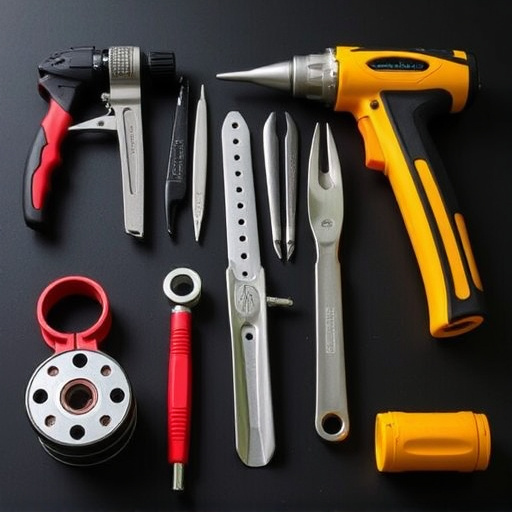
Infrared curing equipment has emerged as a game-changer in the automotive body repair and restoration industry. This technology utilizes focused infrared radiation to accelerate the drying and curing process of various coatings, adhesives, and sealants used in vehicle restoration. By emitting specific wavelengths of light, these machines can efficiently heat up materials, ensuring a quick and consistent cure time. This is particularly beneficial for collision repair services as it streamlines the workflow, reduces overall repair times, and improves the quality of finishes.
In an automotive body shop, infrared curing equipment offers several advantages over traditional drying methods. It allows for precise temperature control, minimizing the risk of overheating or uneven curing. This precision is crucial when dealing with delicate finishes and complex geometry in modern vehicles. Moreover, the non-contact nature of infrared technology eliminates the need for lengthy waiting periods, enabling technicians to work more efficiently and effectively, thereby enhancing overall productivity in collision repair services.
Advantages and Disadvantages of Portable Infrared Systems
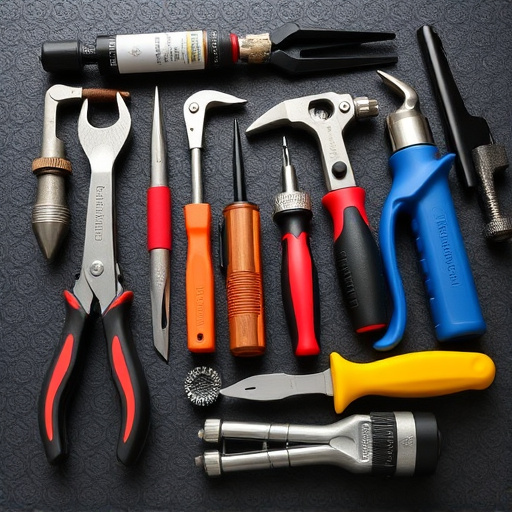
Portable infrared curing equipment offers several advantages for auto body shops and car restoration enthusiasts. One of its key benefits is flexibility; this type of system can be easily moved from one job site to another, making it ideal for mobile repair services or auto repair shops that work on various projects in different locations. This portability also allows for efficient use of space in a workshop, as the equipment can be quickly set up and taken down without causing disruptions. Additionally, portable infrared systems are often more energy-efficient, utilizing advanced technology to heat and cure paint coatings faster than traditional methods, thereby reducing overall energy consumption.
However, there are some disadvantages to consider. These systems may require more frequent maintenance compared to fixed equipment due to their constant movement and potential exposure to varying environmental conditions. The initial investment for a portable infrared curing system can be higher, taking into account the additional features needed for mobility, such as wheels and power sources suitable for outdoor use. In an auto body shop or car restoration project, where precise temperature control is critical, ensuring consistent performance across different models of portable equipment might present challenges. Thus, thorough research and consideration of specific needs are essential before opting for a portable infrared curing equipment solution in auto repair applications.
Fixed Infrared Curing: Benefits, Applications, and Considerations
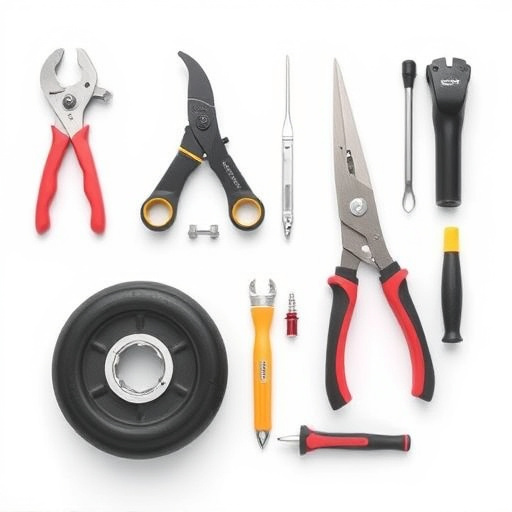
Fixed infrared curing equipment offers several benefits tailored for efficient auto body work and repairs. Its primary advantage lies in the speed it delivers; the infrared heat quickly hardens resins and adhesives, significantly reducing the time required to complete car dent removal or other auto body repairs. This efficiency is particularly beneficial for busy repair shops aiming to maximize throughput without compromising quality.
Moreover, fixed systems are designed for consistent performance, ensuring a uniform curing process across various applications. They are versatile, capable of handling different materials and thicknesses commonly encountered in automotive body work. Their stability also means less chance of accidental shifts or movements during the curing process, which can be critical when precision is required, such as in intricate repair jobs or when dealing with complex car dent removal scenarios.
Infrared curing equipment plays a pivotal role in modern auto body repair, offering distinct advantages in both portable and fixed forms. Portable systems provide flexibility and ease of use for smaller jobs or on-site repairs, while fixed installations are ideal for high-volume workshops, ensuring consistent and efficient drying times. Ultimately, the choice depends on specific workshop requirements and the scale of operations, with both options contributing to faster turnaround times and superior finish quality in auto body repair.

